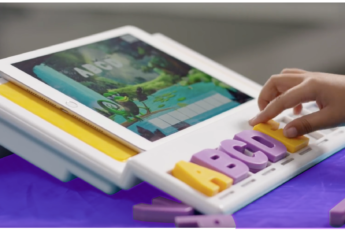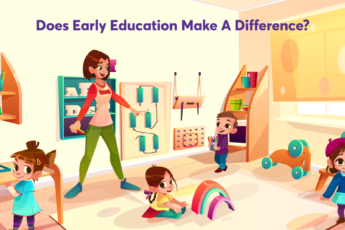Square Panda’s Research Into Neuroscience And The Early Learner
Isn’t it funny how a wrinkled, pink organ that weighs only about 1.3 gms (approximately 2% of your body weight) is the deciding factor in almost every activity you perform?

Image by OpenClipart-Vectors from Pixabay
Guiding most of your behaviour, this complex organ is the nexus of all learning, meaning we spend a lot of time trying to shape this organ to perform optimally.
Beginning at inception itself, the brain is given high priority, and is nourished with a constant diet of ‘brainfood’, educational stimulation, and an enriching environment.
Then begins formal education, specially designed to mould young minds into the future. You, the educators, give everything you have to sculpt accomplished and fully functioning adult minds from the current juvenile brains you have been entrusted with.
Unfortunately, you cannot know which tactic is working, and which one is failing dreadfully. You cannot possibly measure the effect your teaching has on an impressionable young learner.
Square Panda is very aware that educators all over face the same issue, and so, conducted our own research (see our core team here) and referenced data from experts in the same field. We created a curriculum that is based on those findings, and came up with a learning system that focuses on training an early learner in language acquisition using the most optimal learning styles possible.

To help you understand the research that went into creating the Square Panda phonics learning platform, we compiled all our findings on neuroscience and the early learner:
To read about the early learner’s reading brain, view our previous post.
1) The human brain has no natural correspondence between the spoken language and print concepts (writing). New functional connections need to be formed between the visual and the language systems. (Dehaene, & Cohen, 2007)

2) Kids benefit the most from a systematic instruction that will help them:
- Become aware of the sound structure of syllables (phonology)
- Isolate the units (phonemes) within syllables
- Identify which letters go with which phonemes
- Blend letter sounds together into words
- Use multisensory cues during learning

3) The above benefits multiply when children are taught these skills at an early age.
4) Studies have shown that specialised brain regions integrate each letter with its respective speech sound; these regions are especially active when this letter and its sound are presented in a multisensory fashion. (Van Atteveldt et al., 2004; Blau et al., 2009; Blau et al., 2010)
5) The research team led by Stanford University neuroscience researcher (who partners with Square Panda), Dr. Bruce McCandliss, said that the rapid brain response to newly learnt words were influenced by the way they were learnt. Words that were learnt through letter-sound instruction showed neural activity in the left side of the brain, the part of the brain that encompasses the visual and language regions.
6) Systematic phonics instruction is much more effective in grades PreK-1 than in later grades and leads to higher achievement in reading, spelling, word recognition, and comprehension. (National Reading Panel, 2000)
7) For students struggling with language acquisition, multisensory cues may provide complementary information that helps them overcome learning difficulties. (Montessori, 1967; Birsh, 1999; Reid, 2013)
8) Instruction that covers key components of reading, like phonemic awareness and phonics, in English, has a clear benefit for students who do not speak English at home, aka, non-English speaking students. (NICHD, 2000)
 9) The instructions and teaching for non-English speaking students should include work with phonemes and phoneme combinations that do not exist in their native language or home language. (National Literacy Panel, 2006)
9) The instructions and teaching for non-English speaking students should include work with phonemes and phoneme combinations that do not exist in their native language or home language. (National Literacy Panel, 2006)
We believe in teaching the early learner’s brain, which is why our curriculum is largely based on the neuroscience research mentioned above.
Watch our VP of Curriculum and Research, Dr. Vera Blau-McCandliss, talk about early childhood literacy and how we use neuroscience research in our learning system, here.
I hope our article helped every educator out there understand their student’s brain a little better. Visit our website www.squarepanda.in for more information on our neuroscience research into early childhood literacy and the reading brain.
Give us your views on the usage of neuroscience in early education. Start a dialogue in the comment section below.
– Sanjana Shukla, Content Writer, Square Panda India




Leave a Comment